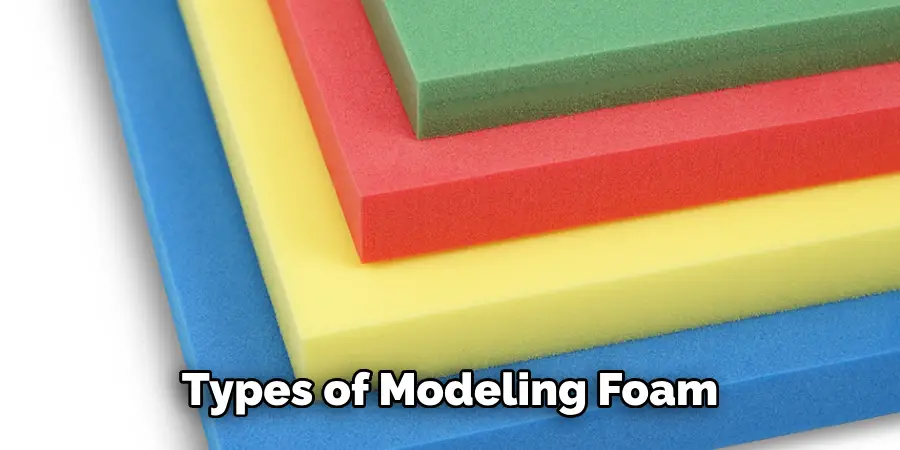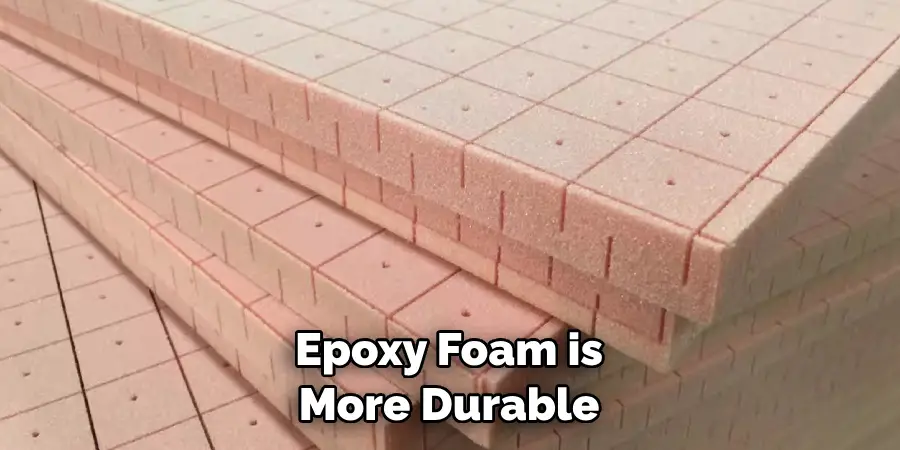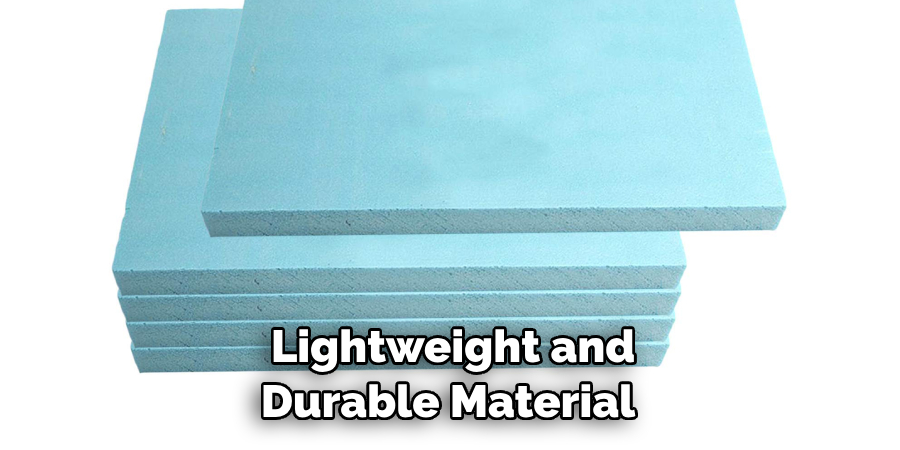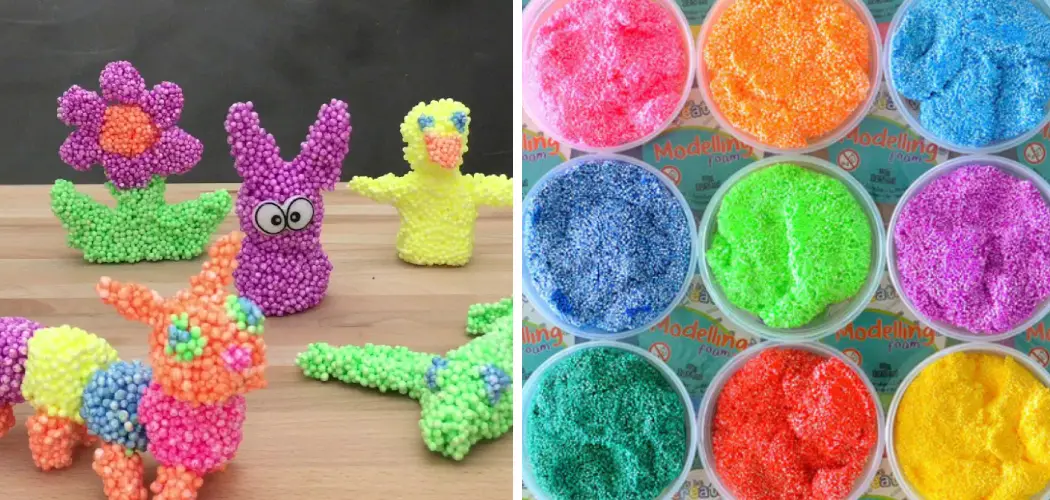Modeling foam is versatile for various projects, from scale models and sculptures to props and costumes. This lightweight and easy-to-shape foam is a favorite among artists, craftsmen, and DIY enthusiasts alike. In this article, we will explore how to use modeling foam and share valuable tips and tricks to help you achieve stunning results.

Can You Use Modeling Foam?
Modeling foam can be a game-changer if you want to get creative or build a project. This versatile material is perfect for various projects, from creating props for theater productions to designing model airplanes. One of the great things about modeling foam is that it’s incredibly easy to use – you can shape it with just your hands or use tools to create intricate details.
Plus, it’s lightweight and affordable, making it an accessible choice for hobbyists and professionals. Whether you’re looking to create a detailed sculpture or need to fill a gap or hole in your project, modeling foam is definitely worth trying out. With a bit of patience and creativity, the possibilities are endless!
Why Should You Use Modeling Foam?
When it comes to crafting, the materials you use can make a world of difference in the outcome of your project. You should consider using modeling foam for your next creative endeavor. Not only is modeling foam lightweight and affordable, but it also allows for easy customization and manipulation.
Whether creating a work of art or designing a prototype, modeling foam can be sculpted into any shape or form you desire. It’s versatile enough for various projects, from cosplay and prop-making to architectural models and set designs. So what are you waiting for? Start exploring the endless possibilities of modeling foam and watch your creativity take flight.
How to Use Modeling Foam to Create Stunning Projects
1. Choose the Right Type of Foam
Before you start working with modeling foam, choosing the right type for your project is essential. There are two main types of modeling foam: open-cell and closed-cell. Open-cell foam is softer and more flexible, while closed-cell foam is denser and more rigid. Closed-cell foam is ideal for creating rigid structures, while open-cell foam is perfect for creating organic shapes and textures.

2. Prepare Your Tools and Work Area
You will need a few essential tools to work with modeling foam, including a hot wire cutter, a utility knife, sandpaper, and a heat gun. You will also need a clean and organized work area with good ventilation. Modeling foam can produce fine dust particles that can be harmful if inhaled, so it’s important to wear a mask and safety goggles when cutting and sanding foam.
3. Create Your Design
Once you have your foam and tools ready, it’s time to start creating your design. Sketch your idea on paper, and then use the hot wire cutter to rough out the shape of your project. Use the utility knife to refine the shape and add details. Sand the foam with fine-grit sandpaper to achieve a smooth finish.
4. Add Texture and Details
Modeling foam can be easily textured and painted to achieve a realistic look. Use a heat gun to create textures like wrinkles, folds, and bumps. Apply several layers of paint, starting with a base coat and then adding highlights and shadows. You can also use other materials, such as fabric, wood, or metal, to add detail and dimension to your project.
5. Seal and Protect Your Creation
Once you’ve created your masterpiece, protecting the foam from moisture and wear and tear is important. Apply a sealant like polyurethane or primer to help maintain the shape of the foam and protect it from damage. You can also use varnish or lacquer for additional protection.

6. Frame Your Creation for Display
If you want to display your project, consider building a frame or stand for it. This will make the foam look more impressive and give it a professional finish. You can use wood, metal, or even PVC pipes to create a sturdy and attractive frame for your creation.
7. Have Fun with it!
Working with modeling foam is an enjoyable and rewarding experience. Experiment, have fun, and let your imagination run wild! You’ll be surprised at the creative projects you can make using this versatile material.
Now that you know how to use modeling foam, why not give it a try? Whether you’re creating a scale model, a prop for a play, or something unique, foam is the perfect material to bring your ideas to life. With these tips and tricks, you’ll be creating amazing projects in no time!
5 Considerations Things When You Need to Use Modeling Foam
1. Type of Foam
When selecting a modeling foam, it is important to consider the type of foam you need. Different types of foam have different properties and can be used for different applications. For example, polyurethane foam is a popular choice for model-making because it is lightweight and easy to shape.
On the other hand, epoxy foam is more durable and can be used for heavier applications such as architectural models.

2. Density
The density of the modeling foam should also be considered when choosing a material. The density of a material affects its weight, strength, and durability. Low-density foams are lighter and easier to work with but are not as strong or durable as higher-density foams. Higher-density foams are more durable but may be too heavy for some applications.
3. Cost
Cost is another important factor when selecting a modeling foam. Foam materials can range from relatively inexpensive to very expensive, depending on the type of foam and the quality of the material used. It is important to consider your budget when selecting a modeling foam so that you don’t spend more than you need on materials that won’t meet your needs or last as long as desired.
4. Color Options
When selecting a modeling foam, it is also important to consider the color options available to get the look you want for your project. Many modeling foams come in different colors, including black, white, gray, red, blue, green, and yellow, so you can find one that perfectly matches your project!
5. Safety Considerations
Finally, it is essential to consider safety considerations when working with any modeling foam, as some types may contain toxic chemicals or fumes that can be hazardous if inhaled or ingested in large quantities over time. It is best to wear protective gear such as gloves and masks when working with any modeling foam to ensure your safety while working on projects!
5 Benefits of Use Modeling Foam
1. Durable and Lightweight
Modeling foam is a lightweight and durable material perfect for creating models. It is easy to shape and can be cut or sanded with ease. Additionally, it is strong enough to hold its shape even when subjected to pressure or stress. This makes it an ideal material for creating intricate models that require precision and accuracy.

2. Cost-Effective
Modeling foam is also a cost-effective solution for model making. It is relatively inexpensive compared to other materials, such as wood or metal, which can make model-making quite expensive. Additionally, modeling foam does not require any special tools or equipment, so the costs associated with using it are minimal.
3. Versatile
Modeling foam is also incredibly versatile and can be used in various applications. It can be used to create small-scale models, such as architectural prototypes, or larger-scale models, such as full-size aircraft or boats. Additionally, modeling foam can be combined with other materials such as wood, metal, plastic, and fabric to create truly unique models.
4. Easy to Work With
One of the great things about modeling foam is that it is very easy to work with. It can be cut into shapes with simple tools such as scissors or an X-Acto knife. Additionally, it can be painted easily using acrylic paints or sprayed with lacquer for a professional finish. This makes it ideal for both novice model makers and experienced professionals alike who want to create detailed models quickly and easily.
5. Safe
Finally, modeling foam is non-toxic and safe for children and adults who are sensitive to certain chemicals found in other materials used in model making, such as wood glue or epoxy resin.
Additionally, since modeling foam does not require any special tools or equipment, there are no sharp edges that could cause injury while working on projects. This makes it an ideal material for anyone looking to make models in a safe and comfortable environment!
Conclusion
Modeling foam is a versatile and fun material that can unleash creativity and bring your ideas to life. Whether you are a professional artist or a hobbyist, modeling foam offers endless possibilities for creating stunning projects.
By following our tips and tricks, you can learn how to use modeling foam with confidence and achieve amazing results. So, start experimenting and let your imagination run wild with modeling foam.
You Can Check It Out to Fabric Wreath Styrofoam

